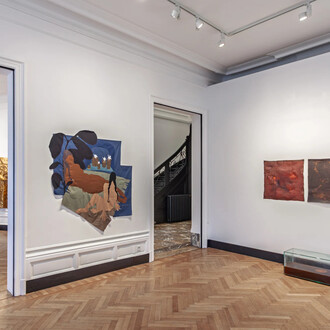Through many documents, videos, photos, objects and costumes mostly unpublished: this extension of the permanent exhibition of the Atomium is more particularly devoted to people who have made Expo 58 and their experiences.
On 17 April 1958, Brussels opened the gates of Expo 58. Today, this exhibition might be seen as the reflection of a Belgium that no longer exists. However, with its humanistic character and encyclopaedic scope, this was a major event.
More than 110 pavilions extended over the exhibition site on the Heysel Plateau, the aim being to bring the cultures of the world together in a single location. These pavilions displayed a variety of styles, ranging from demonstrations of architectural prowess to a more traditional approach. One of these constructions attracted particular notice: the Atomium. A symbol of Expo 58, and very soon of Brussels itself, this emblem of Science serving Humanity emphasises the ambition driving the event: A review of the world for a more humane world. For nearly 200 days, around 42 million people flocked to Expo 58, which received tens of thousands of visitors from over forty different countries on a daily basis.
For Belgian families, a visit to the Exhibition was an unforgettable experience. Some discovered the world and its different cultures through the foreign pavilions, others came and returned simply to stroll around, but everyone remembered this impressive World’s Fair, which holds an important place in the collective memory of the Belgian nation.
As well as visiting the Atomium, the crowds were drawn to the fashion parades in the American pavilion, and to the Sputnik replicas in the pavilion belonging to the USA’s great rival, the Soviet Union. Visitors could also walk around Joyful Belgium, a lively, picturesque village featuring a mix of traditional houses in every different Belgian architectural style. There was also an amusement park, about seventy restaurants, a church where marriage ceremonies could be conducted, chairlifts, a motel and a host of other activities. These all ensured that visitors had complete, unique and varied experiences, leaving them with lasting memories of this period of optimism and hope for the future.














